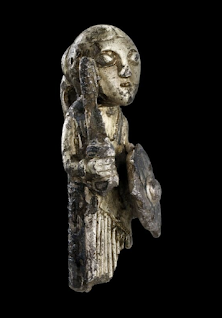Another visitor was Leonard Bernstein, who turned up unannounced one day in Cuernavaca, proposing to move in and stay with her, and bringing with him a grand piano.....Martha moved him smartly into a house up the road, with a large pool, in easy walking distance. He wanted to play Scrabble, which she resisted, hating all games except for gin rummy, but one night, after he had been told by local musicians he met that marijuana made the music flow faster, they got ahold of four joints and prepared to experiment.
Since they were both terrified of what might happen, they decided to boost their courage by having a few martinis first, generously poured into water tumblers. After a while, beginning to feel ill, Martha crawled toward the spare bedroom. As she reached the bed, she heard Bernstein fall heavily in the sitting room and lie still. She was sick all night; when she fell asleep, her nightmares were appalling. Next morning, she crept home, leaving Bernstein still unconscious on the sitting room floor.
Too bad about the martinis.

Gellhorn Hits the Hippie Trail

In 1937 she accepted her first war assignment, covering the Spanish Civil War for Collier’s Weekly, and it was during this time that she began an affair with Hemingway. He dedicated For Whom the Bell Tolls (1940) to her, and they married in 1940 (divorced 1946).
Ernest Dowson and The Days of Weed and Roses
Going further back, a Joyce Kilmer essay, “Absinthe At the Cheshire Cheese,” published in his 1921 book The Circus: And Other Essays and Fugitive Pieces, states, "When Dowson took hashish during his student days, Mr. Arthur Symons tells us, it was before a large and festive company of friends.” He is speaking of poet Ernest Dowson, whose famous turns of phrase include “gone with the wind” and “the days of wine and roses.”Margaret Mitchell, touched by the "far away, faintly sad sound I wanted" of Dowson's line, chose it as the title of her epic Civil War novel. In the 1962 movie Days of Wine and Roses, Jack Lemmon leads Lee Remick into alcoholism (by giving her a crème de cocao-containing Brandy Alexander after she says she likes chocolate).
Symons, a Baudelaire scholar who is said to have had a psychotic breakdown in 1909, was an influence on Yeats and a member, along with Dowson and Yeats, of the bohemian Rhymers' Club, whose members reportedly used hashish. In 1918 he wrote a piece for Vanity Fair titled, "The Gateway to an Artificial Paradise: The Effects of Hashish and Opium Compared," in which he says hashish "has the divinity of a sorceress, the charm of a dangerous and insidious mistress."
The book Arthur Symons by John M. Munro says, “The years between the publication of Days and Nights (1889) and London Nights (1895) may properly be referred to as Symons’ Decadent period…..he experimented, cautiously, with hashish…. The footnote reads: “On one occasion, John Addington Symonds, Ernest Dowson, and some of [Arthur] Symons’ lady friends from the ballet all tried hashish during an afternoon tea given by Symons in his rooms at Fountain Court." Symons described the event:
 |
| "Dancers" by Edgar Degas, c. 1878 |
Despite Symons saying hashish (or the more beautifully spelled haschisch) had been Dowson's favorite form of intoxication in college, Kilmer downplays the effect it might have had on Dowson's work, calling it "incongruous and unconvincing....He was an accomplished artist in words, a delicate, sensitive and graceful genius, but he was no more fitted to be a pagan than to be a policeman."
The moralistic Roman Catholic poet who wrote, "I think that I shall never see /A poem as lovely as a tree," Kilmer writes in his essay on Dowson, "There are, and there have always been since sin first came into the world, genuine decadents. That is, there have been writers who have devoted all their energies and talents to the cause of evil, who have consistently and sincerely opposed Christian morality, and zealously endeavored to make the worst appear the better cause. But every poet who lays a lyric wreath at a heathen shrine, who sings the delights of immorality, or hashish, or suicide, or mayhem, is not a decadent : often he is merely weak-minded. The true decadent, to paraphrase a famous saying, wears his vices lightly, like a flower. He really succeeds in making vice seem picturesque and amusing and even attractive."
























